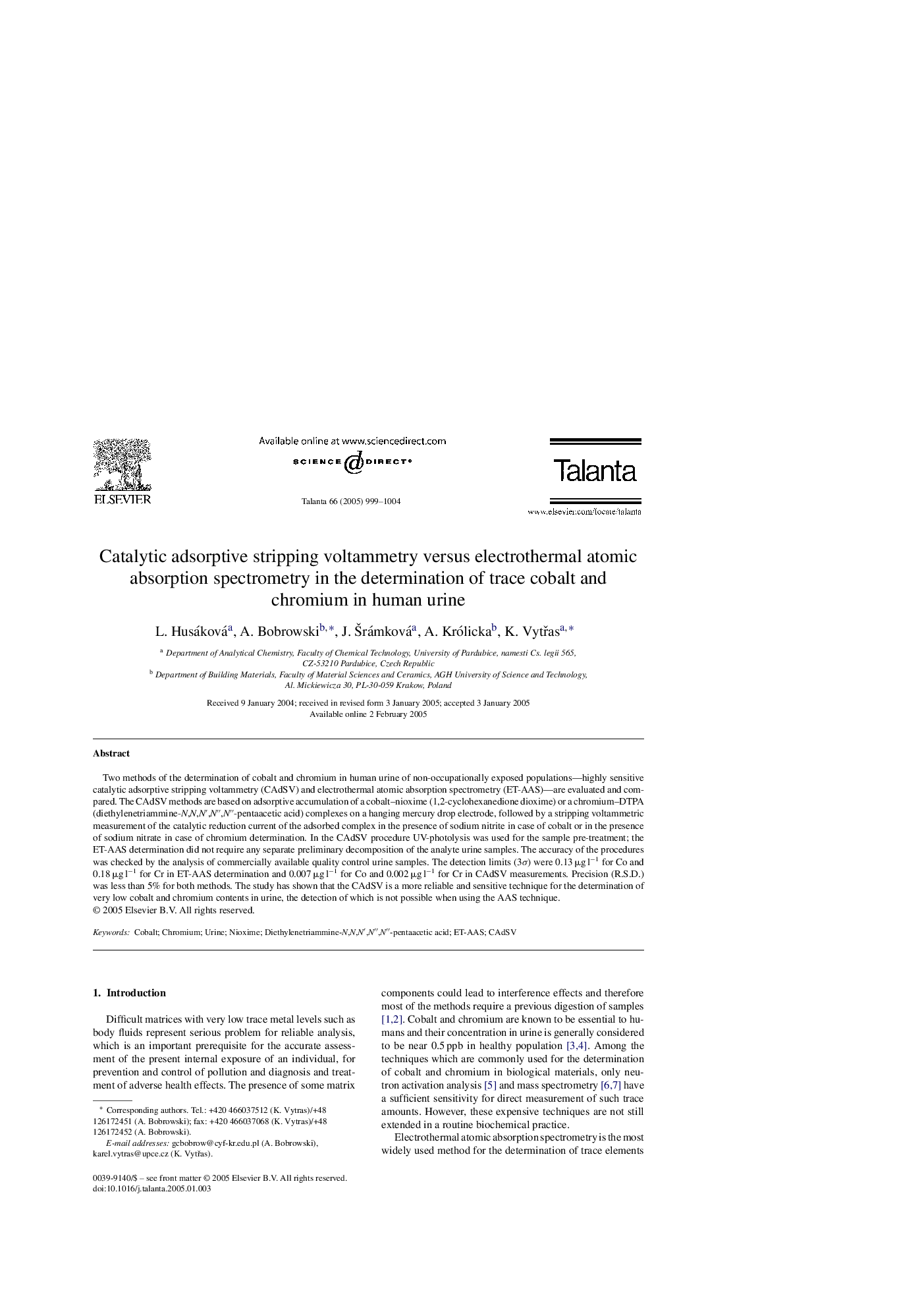| Article ID | Journal | Published Year | Pages | File Type |
|---|---|---|---|---|
| 10561462 | Talanta | 2005 | 6 Pages |
Abstract
Two methods of the determination of cobalt and chromium in human urine of non-occupationally exposed populations-highly sensitive catalytic adsorptive stripping voltammetry (CAdSV) and electrothermal atomic absorption spectrometry (ET-AAS)-are evaluated and compared. The CAdSV methods are based on adsorptive accumulation of a cobalt-nioxime (1,2-cyclohexanedione dioxime) or a chromium-DTPA (diethylenetriammine-N,N,Nâ²,Nâ³,Nâ³-pentaacetic acid) complexes on a hanging mercury drop electrode, followed by a stripping voltammetric measurement of the catalytic reduction current of the adsorbed complex in the presence of sodium nitrite in case of cobalt or in the presence of sodium nitrate in case of chromium determination. In the CAdSV procedure UV-photolysis was used for the sample pre-treatment; the ET-AAS determination did not require any separate preliminary decomposition of the analyte urine samples. The accuracy of the procedures was checked by the analysis of commercially available quality control urine samples. The detection limits (3Ï) were 0.13 μg lâ1 for Co and 0.18 μg lâ1 for Cr in ET-AAS determination and 0.007 μg lâ1 for Co and 0.002 μg lâ1 for Cr in CAdSV measurements. Precision (R.S.D.) was less than 5% for both methods. The study has shown that the CAdSV is a more reliable and sensitive technique for the determination of very low cobalt and chromium contents in urine, the detection of which is not possible when using the AAS technique.
Related Topics
Physical Sciences and Engineering
Chemistry
Analytical Chemistry
Authors
L. Husáková, A. Bobrowski, J. Å rámková, A. Królicka, K. VytÅas,
